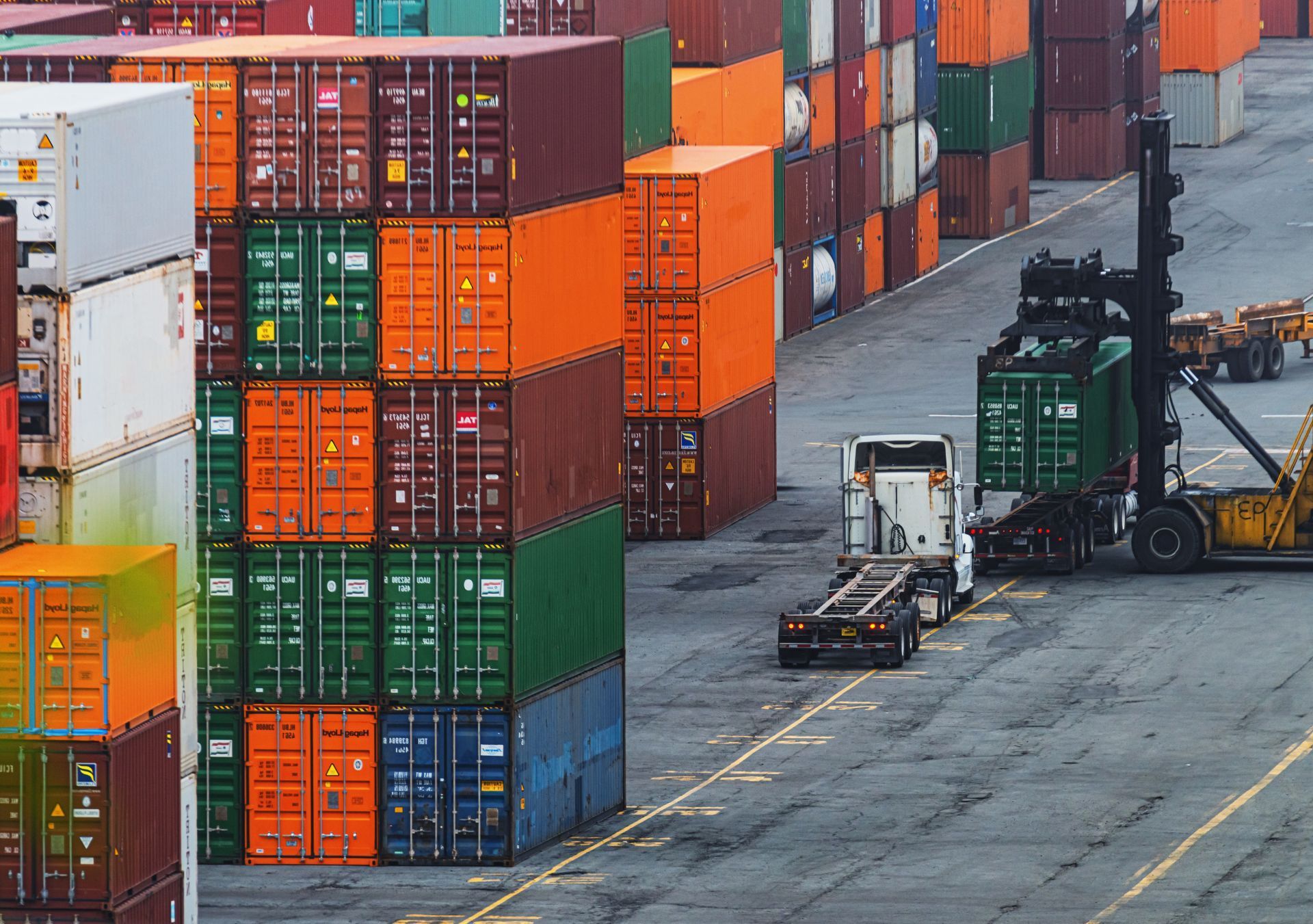
Most Common Business Policies
Index
Contact Us
Inland marine insurance is vital for businesses that transport goods and equipment. Especially relevant in Texas, this type of insurance provides specific coverages that traditional policies may not. In this article, we will explore everything you need to know about inland marine insurance in Texas, including its definition, types, coverage details, costs, and how to file a claim.
Understanding Inland Marine Insurance
Inland marine insurance is a specialized type of coverage designed to protect goods in transit and specific kinds of movable property. Though it may seem confusing, the name originates from marine insurance, which initially covered cargo over water.
This insurance has adapted to cover items that are not only on water but also on land, including valuable items like fine art, equipment, and goods that are shipped between different locations. Its importance cannot be overstated; for businesses that rely on transportation or logistics, inland marine insurance can offer significant peace of mind and financial backing. In an increasingly interconnected world, where goods are often transported across vast distances, the need for such coverage has grown, ensuring that businesses can operate without the looming threat of financial loss due to unforeseen circumstances.
Definition and Importance of Inland Marine Insurance
Inland marine insurance provides coverage for the loss or damage of goods while they are transported over land or stored in locations away from the business’s primary premises. It protects businesses from financial losses due to accidents, theft, or natural disasters.
The importance of this type of insurance is increasingly evident in industries such as construction, manufacturing, and logistics. Without it, companies could face devastating financial losses that disrupt operations and impact profitability. For instance, a construction company that relies on expensive machinery and tools for its projects would be severely affected if those items were damaged during transport. Inland marine insurance not only safeguards the assets but also allows businesses to maintain their schedules and commitments, ultimately contributing to customer satisfaction and trust.
Types of Inland Marine Insurance
There are several types of inland marine insurance, including:
- Equipment Coverage: This protects businesses' tools and equipment from damage or theft while they are being used in various locations.
- Cargo Insurance: This covers the goods being transported against loss or damage.
- Bailee Insurance: This is relevant for businesses that temporarily hold onto other people's property, ensuring coverage during that period.
- Exhibition Insurance: Designed for companies that showcase their products, this coverage protects goods while being exhibited at trade shows or events.
Choosing the right type of inland marine insurance is essential based on the specifics of your business operations. Each type of coverage addresses unique risks and requirements, and businesses must carefully assess their needs to ensure they are adequately protected. For example, a company that frequently transports high-value electronics may prioritize cargo insurance, while an art gallery that participates in exhibitions may find exhibition insurance more critical. Understanding these nuances can help businesses tailor their insurance policies to effectively mitigate risks and safeguard their investments.

The Scope of Inland Marine Insurance in Texas
Texas has a unique landscape and economic structure that influences how inland marine insurance operates. The state's vastness and the variety of industries—ranging from agriculture to technology—affect the coverage requirements and opportunities available for businesses. With its extensive network of highways, railroads, and waterways, Texas serves as a critical hub for the transportation of goods, making inland marine insurance particularly relevant for companies engaged in logistics and distribution. This insurance type not only protects physical assets but also plays a vital role in ensuring business continuity in a state where commerce is constantly on the move.
Coverage Details of Texas Inland Marine Insurance
The coverage details of inland marine insurance can vary significantly from policy to policy. However, a typical Texas inland marine insurance policy includes coverage for:
- Transportation of goods between locations.
- Storage of goods at off-site locations.
- Valuable items, such as electronics or equipment, used in projects.
Understanding these details ensures that your business is adequately protected against potential risks and losses. Additionally, many policies can be tailored to meet specific industry needs, such as coverage for specialized equipment in the oil and gas sector or protection for agricultural products during transit. This flexibility allows Texas businesses to secure the right level of coverage that aligns with their operational demands, thereby minimizing financial exposure in the event of unforeseen incidents.
Limitations and Exclusions
While inland marine insurance provides essential coverage, it's crucial to understand its limitations and exclusions. Common exclusions may include:
- Damage due to wear and tear.
- Losses incurred through improper packing or handling.
- Acts of war or terrorism.
Businesses must read their policies carefully to identify what is not covered and consider additional coverage options if needed. Moreover, some policies may also exclude coverage for certain types of goods, such as perishable items or high-value collectibles, which can leave businesses vulnerable if they are not adequately informed. Therefore, consulting with an insurance expert who understands the intricacies of inland marine insurance can be invaluable, ensuring that businesses not only comply with state regulations but also protect their assets effectively against a myriad of potential risks.
The Cost of Inland Marine Insurance in Texas
The cost of inland marine insurance can vary based on several factors, including the type of coverage selected, the value of the items insured, and the level of risk associated with your business operations. Inland marine insurance is particularly vital for businesses that transport goods over land, as it protects against losses that occur during transit, as well as while the goods are stored at various locations. This type of insurance is not limited to just marine-related activities; it encompasses a wide range of property types, including equipment, tools, and even fine art, making it a versatile option for many industries.
Factors Influencing the Insurance Cost
Several factors can influence the cost of inland marine insurance, including:
- The type and value of the property being insured.
- The industry and specific operational risks.
- The amount of coverage required.
- Your business's claims history and overall risk profile.
A thorough understanding of these factors will help businesses budget accurately for their insurance needs. For instance, a construction company may face higher premiums due to the high-value equipment it uses and the inherent risks of job sites. Conversely, a business that primarily deals with low-value items may find its insurance costs to be significantly lower. Additionally, the geographical location of the business can also play a role; areas prone to natural disasters or high crime rates may see increased insurance costs.
Ways to Lower Your Insurance Premium
Lowering your insurance premium is possible through various strategies, including:
- Implementing risk management practices to reduce the likelihood of claims.
- Increasing your deductible to lower premium costs.
- Bundling inland marine insurance with other business policies for discounts.
By taking proactive steps, businesses can effectively manage their insurance costs while ensuring they have adequate coverage. Additionally, regular reviews of your insurance policy can uncover opportunities for savings. For example, if your business has invested in new technology or improved security measures, updating your insurer about these changes may qualify you for lower rates. Moreover, maintaining a good relationship with your
insurance agent can provide insights into potential discounts or coverage adjustments that align with your evolving business needs.
How to Choose the Right Inland Marine Insurance Policy
Choosing the right inland marine insurance policy is crucial for effective risk management. Businesses should evaluate their specific needs and carefully compare available policies.
Evaluating Your Business Needs
Businesses need to assess their unique circumstances, including:
- The types of goods transported.
- The frequency of transportation.
- The geographical areas of operation.
By understanding these factors, companies can select policies that specifically address their coverage needs, offering tailored protection against potential losses. Additionally, it’s important to consider the value of the items being transported. High-value goods may require higher limits of coverage, while specialized items might need specific endorsements to ensure they are adequately protected. Furthermore, businesses should also evaluate their risk tolerance; understanding how much risk they are willing to absorb can influence the deductible amounts and premium costs they are prepared to accept.
Comparing Different Insurance Providers
Not all insurance providers offer the same levels of service, coverage, or pricing. It’s prudent for businesses to compare different providers by examining:
- Policy terms and conditions.
- Customer service and support capabilities.
- Reviews and feedback from other customers.
A comprehensive comparison can help businesses find the best solution tailored to their needs and budget. In addition to these factors, it is also beneficial to look into the financial stability of the insurance provider. A company’s credit rating can provide insights into its ability to pay claims, which is a critical aspect of any insurance relationship. Engaging with an insurance broker can also be advantageous, as they can offer expert advice and help navigate the complexities of different policies, ensuring that businesses make informed decisions that align with their operational risks and financial goals.

Filing a Claim for Inland Marine Insurance in Texas
Understanding the claims process is essential for businesses seeking coverage under their inland marine insurance policy. Knowing the steps involved can reduce stress and ensure a smoother experience when unexpected events occur. Inland marine insurance is designed to protect goods in transit, as well as specialized equipment and property that may not be covered under standard commercial property policies. This type of insurance is particularly important for businesses that rely on transporting goods or equipment over land or waterways, making it crucial to be well-informed about the claims process.
Steps to File a Claim
When it comes time to file a claim, follow these steps:
- Notify your insurance provider as soon as the loss or damage is discovered.
- Collect all necessary documentation, including photos, receipts, and witness statements.
- Submit a formal claim along with the required documentation.
Timely communication and thorough documentation are key components of a successful claim process. Additionally, it's wise to keep a detailed log of all communications with your insurer, including dates, times, and the names of representatives you speak with. This can serve as a valuable reference if any discrepancies arise later in the process. Furthermore, understanding your policy's specific coverage limits and exclusions can help you prepare more effectively and avoid any surprises when filing your claim.
What to Expect After Filing a Claim
Once a claim is filed, policyholders can expect a few key actions from their insurance company:
- An adjuster may be assigned to review the claim and assess the damage.
- Your insurer will communicate the next steps and provide updates during the claims process.
- The claim’s outcome and any potential payout will be communicated within a specified timeframe.
Understanding what to expect can help businesses feel more prepared and organized during this potentially stressful time. The adjuster's assessment may involve a site visit to evaluate the extent of the damage and verify the details provided in your claim. It's important to be cooperative and provide any additional information requested, as this can expedite the process. Additionally, keep in mind that the timeline for claim resolution can vary based on the complexity of the situation, so maintaining open lines of communication with your insurer will be beneficial in managing expectations throughout the process.
Frequently Asked Questions About Inland Marine Insurance
With many myths and misunderstandings surrounding inland marine insurance, addressing frequently asked questions can help clarify common concerns and guide policyholders.
Common Misconceptions About Inland Marine Insurance
This insurance type is often misunderstood. Some common misconceptions include:
- Inland marine insurance is only for marine-related businesses.
- All types of businesses do not require this coverage.
- It is prohibitively expensive for small businesses.
Understanding the truth can empower businesses to protect their assets more effectively. Inland marine insurance actually covers a wide range of goods and property, including equipment, tools, and even fine art, making it relevant for various industries beyond just marine activities. Moreover, many small businesses find that the cost of inland marine insurance is manageable, especially when weighed against the potential financial losses that could arise from damaged or lost property during transit. This type of insurance can be tailored to fit the specific needs of a business, allowing for a more affordable and comprehensive risk management strategy.
Essential Tips for First-Time Policy Buyers
For first-time buyers of inland marine insurance, consider the following tips:
- Research and understand the different types of coverage options available.
- Consult with an insurance agent knowledgeable in inland marine insurance.
- Read policy terms carefully to avoid coverage gaps.
By following these tips, new policy buyers can make well-informed decisions, ensuring adequate protection for their valuable assets during transit. Additionally, it is beneficial to assess the specific risks associated with your business operations. For instance, if your company frequently transports high-value items or operates in multiple locations, you may need a more robust policy that covers these unique risks. Engaging in discussions with other business owners or industry peers can also provide insights into best practices and common pitfalls, further enhancing your understanding of inland marine insurance.
In conclusion, inland marine insurance is a crucial component of risk management for businesses in Texas. By understanding its coverage, identifying the right policy, and knowing how to file a claim, businesses can effectively navigate the complexities of this insurance type, ultimately safeguarding their operations and assets.


